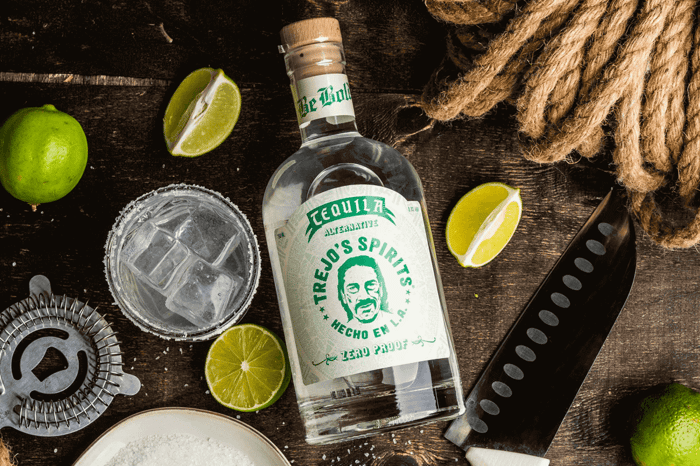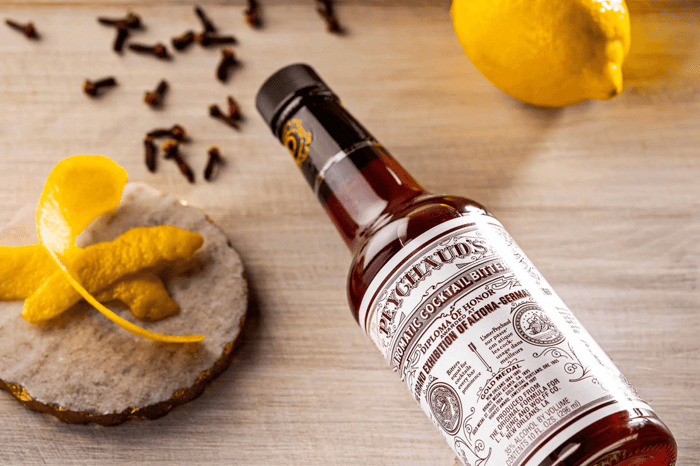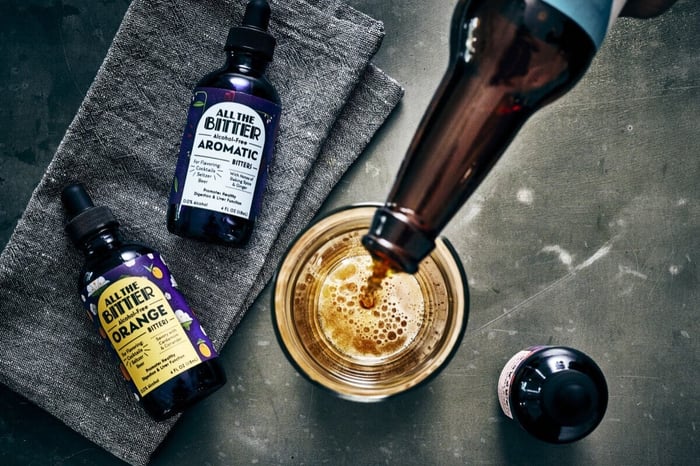Introduction
Non-alcoholic cocktails, once relegated to the sidelines of bar and restaurant menus—or simply not included at all—have stepped into the spotlight in recent years, offering a sophisticated alternative to juice, tea, and soft drinks. As health-conscious choices gain momentum and societal drinking habits evolve, bars and restaurants are presented with a unique opportunity to innovate and diversify. This guide dives deep into the world of non-alcoholic cocktails, exploring their rise in popularity, the art of crafting and selling them, practical considerations, and the benefits of inclusive hospitality.
Table of Contents

Why Offer Non-Alcoholic Drinks?
There's no ignoring the meteoric rise in popularity of non-alcoholic alternatives. While most operators are beginning to understand the upside of inclusive beverage options, it's still fair to ask: is it financially viable to invest in the planning, stocking, training, and execution of a non-alcoholic program? Let's look at the tangible and intangible benefits of expanding your drink menu to include non-alcoholic options:
- Financial upside: The numbers speak for themselves. The demand for non-alcoholic beverages has surged in recent years. For instance, during Dry January 2022, on-premise sales of non-alcoholic beer, spirits, and mocktails saw a staggering $295 million increase while sales of soft drinks stayed relatively flat, suggesting that guests upsold from water to a non-alc alternatives. These offerings might not top your sales charts, but they will undoubtedly contribute to your revenue.
- Attracting a Wider Audience: By catering to the non-drinking demographic (30% of the country according to the Washington Post), you open your doors to patrons who might have otherwise chosen a different venue. Consider the scenario where a group chooses the establishment specifically because of its inclusive beverage menu (we see this already with restaurants who offer great vegetarian and gluten-free options). This not only boosts sales for that particular visit but also increases the likelihood of repeat business and positive word-of-mouth.
- Encouraging Longer Stays: When guests have a diverse range of drink options, they're more likely to stay longer and order more. A group might be willing to stay longer and order another round, for instance, if their designated driver and non-drinking friends can enjoy a non-alcoholic beer or cocktail alongside them. It allows drinkers to pace themselves better, too, offering the option of alternating between alcohol and non-alcoholic drinks throughout the evening.
- The Hospitality Aspect: Nick Amano-Dolan of Trick Dog shared a phrase with me, "The Invisible ROI of Joy", and it's now my favorite way to describe this concept. Beyond the financial benefit is the immeasurable value of hospitality. Offering non-alcoholic cocktails is an invitation for all guests to partake in the joy of a well-crafted drink. It's about inclusivity, making every guest feel valued and catered to. Such positive experiences translate to glowing reviews, recommendations, and most importantly, happy guests. Isn't that the whole point, anyway?
TL;DR non-alcoholic drink options mean happy guests and higher sales. Okay, now that that's settled, let's get into building your non-alc beverage program.
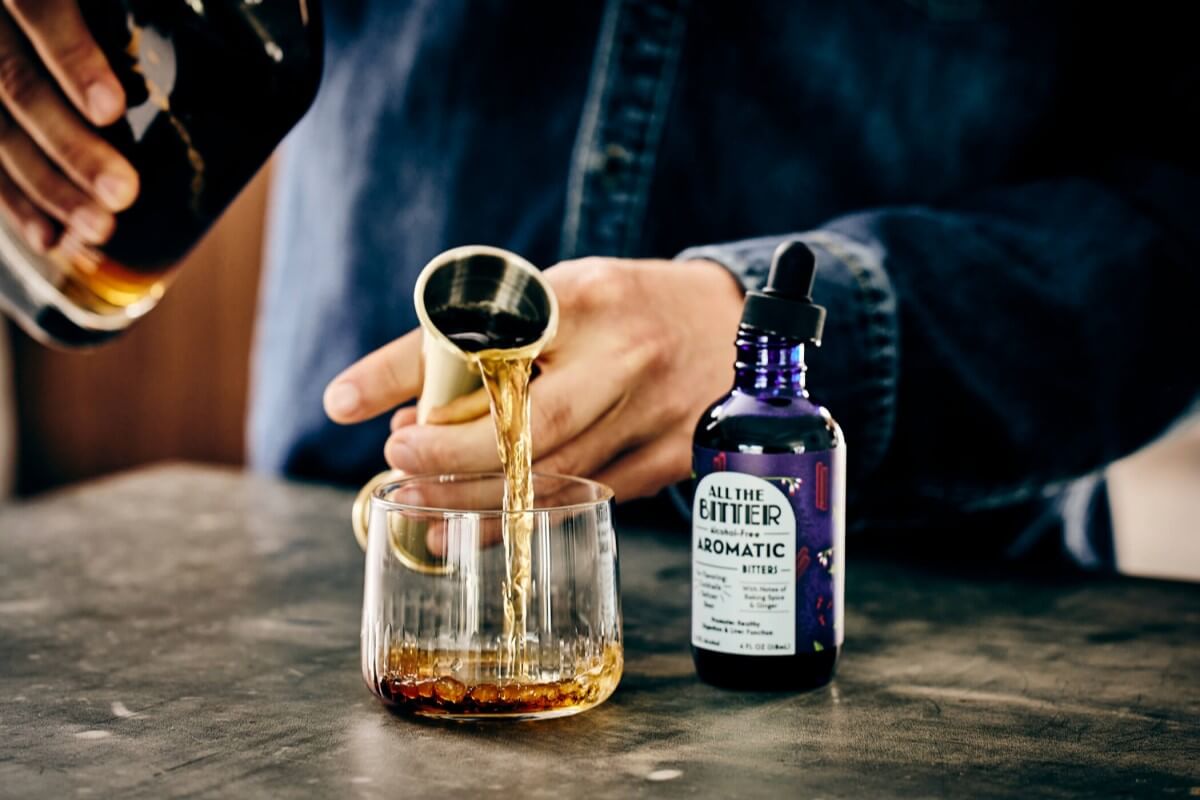
Non-Alcoholic Mixology 101
It's not difficult to create satisfying non-alcoholic cocktails, but it does require a bit of work and careful consideration. While the absence of alcohol might seem like a challenge, it's an opportunity to showcase creativity, innovation, and finesse.
We don't need to rewrite the playbook—a good cocktail should contain the same basic elements, whether it is made with alcohol or not. Granted, these things are easier to achieve using alcoholic spirits, but by paying attention to our drink's components, we can easily get there without booze.
The Foundations of a Non-Alcoholic Cocktail
In his excellent book Mindful Mixology, cocktail expert Derek Brown outlines 4 key elements that make up the foundation of any cocktail: intensity of flavor, texture, piquancy, and volume.
- Intensity of Flavor: A non-alcoholic cocktail should announce its presence. It needs to be robust in flavor, distinguishing itself from a soft drink or juice. Non-alcoholic spirits can go a long way in this department, as well as ingredients like strongly brewed tea (pu'er or lapsang souchong come to mind), flavored syrups, or the tart punch of citrus.
- Texture: The texture of a cocktail can elevate it from decent to exceptional; a thin, watered-down mix simply lacks the essence of a true cocktail. Texture can be derived from viscosity, as seen with rich syrups, fruit jams, or molasses, from the frothiness of egg whites, or from a lively mouthfeel achieved using ingredients like citrus, carbonation, or even vinegar.
- Piquancy: What sets alcohol apart from other drinks is its 'bite' or 'burn'. This could also be described as 'piquancy', a pleasantly strong or sharp flavor that in a cocktail forces you to slow down, taking small sips, savoring the experience. Sans alcohol, ingredients like capsaicin-infused non-alcoholic spirits, bitter aperitifs, vinegar, or ginger can replicate that sensation.
- Volume: Cocktails typically adhere to several standard formats (Sour, Collins, etc.) and there's honestly no reason to throw those away. Within these formats, spirits account for between 1.5 and 3 ounces of the liquid. This volume can be replaced with another ingredient, such as a non-alcoholic spirit, or by simply increasing the amounts of the existing components.
Attending to these four essential cocktail components lays the foundation for a successful drink, but we still need to taste and fine-tune. Balance is key—if the cocktail feels too sweet, sour, or lacks depth, adjustments are necessary. A standout cocktail offers layers of flavor market by a distinct beginning, middle, and end. Whether it's a simple drink or something more complex, the flavors should be precise, balanced, and delicious.
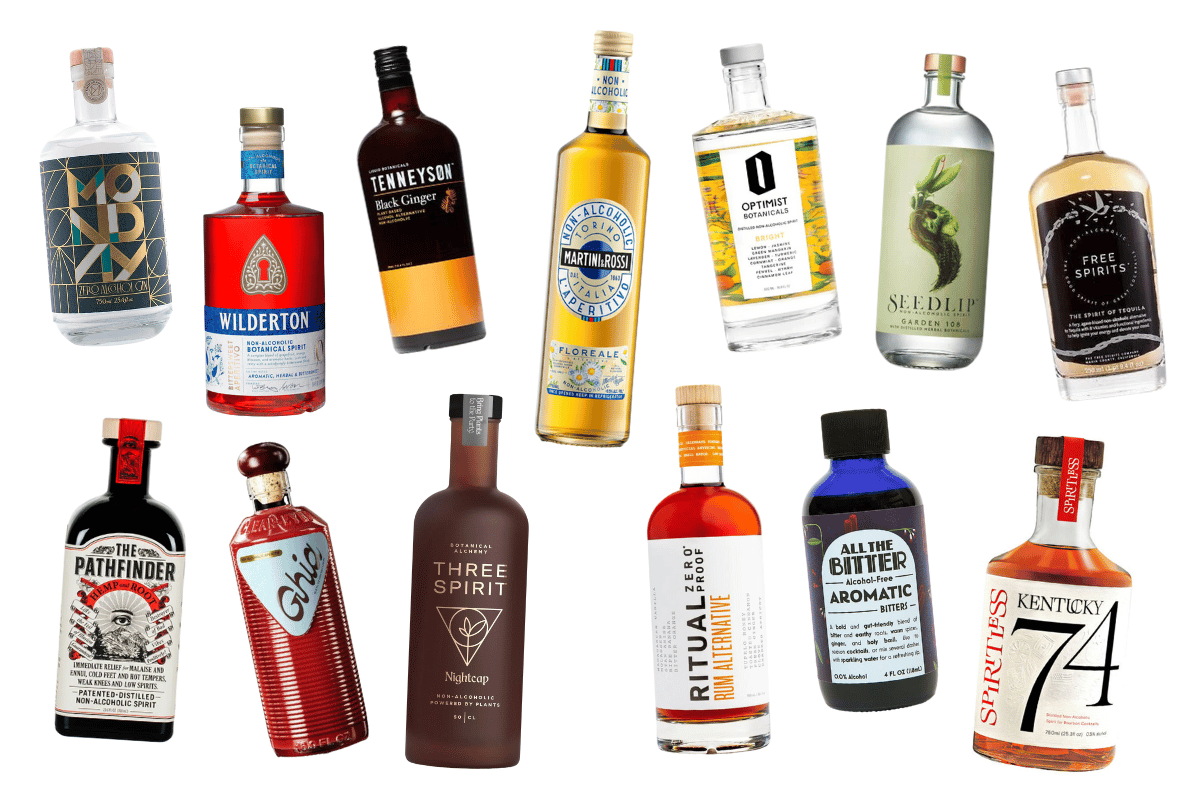
Using Non-Alcoholic Spirits
There was a time, not long ago, when non-alcoholic spirits didn't exist. It was a dark age when most restaurants just had a button in their system labeled "mocktail," and for $4 the bartender would "whip something up"—undoubtedly pineapple juice, grenadine, perhaps some muddled mint, and soda water.
Today, we're fortunate to have alternatives that emulate almost every style of spirit, and a growing category of innovative botanical-based spirits. These game-changing products have simplified the creation of great non-alcoholic cocktails, reducing the need for time-consuming prep like syrups, tinctures, and infusions. Care still needs to be taken in crafting your drinks—and layers of housemade elements will undoubtedly yield better drinks—but these spirits will help your bar do some of the heavy lifting.
Traditional Spirit Alternatives
For those looking to replicate the taste of classic spirits like gin, whiskey, and tequila, there are numerous non-alcoholic alternatives available. These make great building blocks for NA cocktails, often incorporating a capsaicin-driven "bite". Their recognizable profiles make them appealing to guests and consumers who might prefer a non-alcoholic margarita over a drink made with the more unique style of spirits discussed below. And they offer a plug-and-play option for bartenders already versed in these flavor profiles.
This familiarity can be a double-edged sword, though. While non-alcoholic rum might echo its alcoholic counterpart, it's not the same thing, potentially leading to a gap between expectation and experience. That said, serve up an Old Cuban made with Ritual's Rum Alternative and I'd be shocked if your guests didn't love it. A margarita made with non-alc tequila? It absolutely slaps.
Check out this guide for our recommendations in the "traditional" non-alc spirit category.
Unique Botanical Spirits
There's a burgeoning category of unique non-alcoholic spirits that aren't trying to mimic their alcoholic siblings. These spirits may be more exciting for creative bartenders and anyone looking for a new flavor experience. Brands like Wilderton, Ghia, Pathfinder, Tenneyson, Three Spirit, and Optimist (just to name a few) are redefining the non-alcoholic spirits landscape. Without preconceived notions of flavor tied to alcoholic counterparts, these spirits shine in their own right. Given their distinct, memorable flavors, they tend to stand up better in spirit-forward cocktails—like our Bittersweet Symphony, an update to the classic Negroni—and can put an interesting spin on familiar cocktail formats like a Mojito in this version made with Seedlip.
A Note On Cocktail Builds
It's worth noting that when using non-alcoholic spirits, some cocktail formats are consistently more successful than others. Builds like a Sour, Collins, Mule, or Spritz (among others) tend to work well because they are layered with citrus, syrup, club soda, ginger beer, sparkling wine, bitters, etc. These ingredients all check off elements of intensity, texture, or piquancy. When combined with the flavor and bite of a non-alcoholic spirit, these drinks can easily deliver a satisfying cocktail experience.
Spirit-forward drinks like an Old Fashioned or Manhattan are harder to pull off successfully. Non-alcoholic spirits are certainly flavorful and can be relatively intense, but they don't pack the same punch as 40-50% ABV spirits. Making a great "spiritous" non-alcoholic cocktail is achievable, but it requires a bit of creativity or a very specific assemblage of spirits.
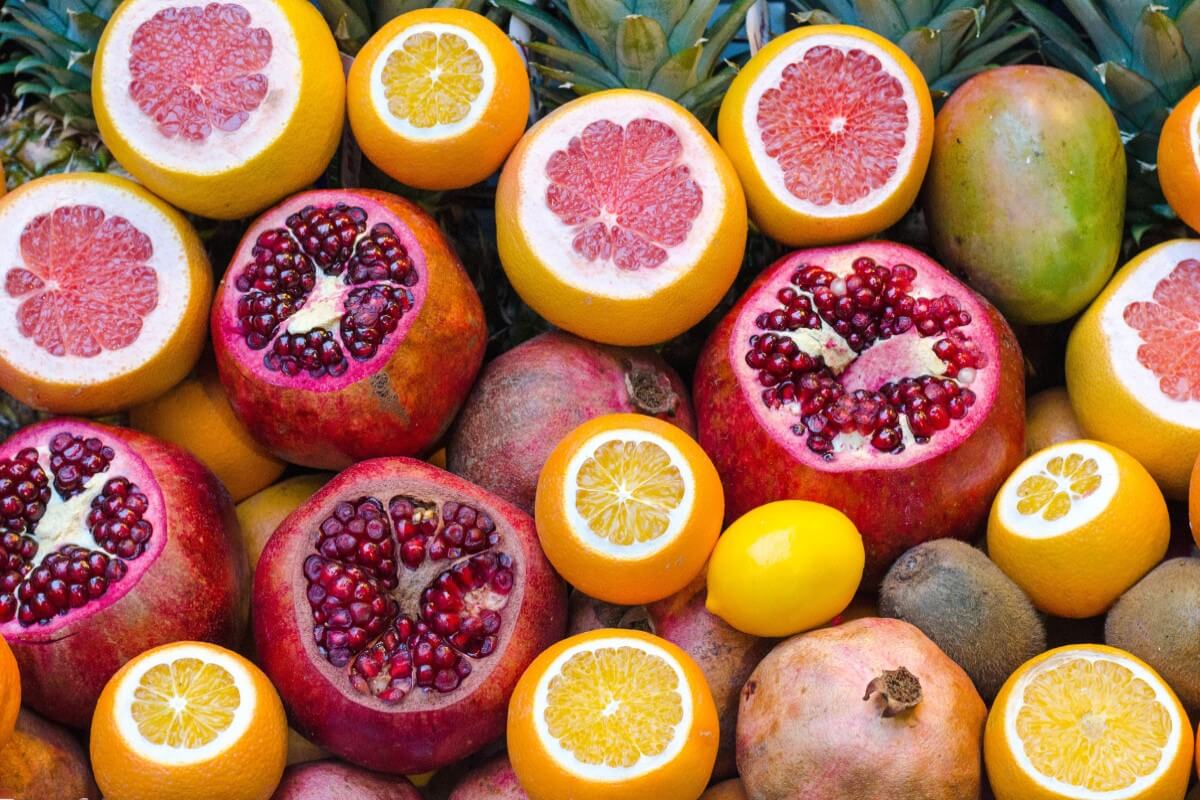
Great Ingredients Make Great Drinks
Without the backbone of alcohol, creating a satisfying non-alcoholic cocktail requires being thoughtful with the ingredients you choose. While non-alcoholic spirits have revolutionized the landscape and serve as excellent foundations for intricate drinks, they don't deliver the same impact as their 40% ABV counterparts. This gap underscores the importance of choosing each ingredient with intention. To truly shine, every component must be packed with flavor and of the highest quality.
The following list is a great place to start in selecting ingredients for delightful non-alcoholic cocktails:
- Verjus: Literally meaning "green juice" in French, verjus is a tart juice made from unripe, unfermented wine grapes. It offers a milder acidity than vinegar, more depth than lemon juice, and just a hint of sweetness for balance.
- Vinegar: If a drink lacks "pop", a touch of vinegar often does the trick. Begin with a barspoon and adjust. Apple cider vinegar is versatile, balsamic suits darker drinks, and fruit vinegars add unique layers.
- Shrub: A mixture of fruit, vinegar, and sugar, shrubs infuse drinks with a vibrant, tangy flavor. They shine in highballs where soda dilutes the intense vinegar, but they can elevate short drinks wonderfully, too, when used in moderation.
- Citrus: While this one could go without saying, it's worth noting how useful citrus is in non-alcoholic cocktails. There's a reason why a zero-proof whiskey sour is more satisfying than an Old Fashioned—the acidity in lemon and lime juice make our mouths happy. Grapefruit is a standout ingredient, too.
- Ginger: Its natural bite and zest make ginger an incredibly useful addition to non-alcoholic cocktails, whether in the form of syrup, juice, or ginger beer.
- Tea: With a spectrum as diverse as wine, teas like nutty buckwheat, smoky lapsang souchong, tart hibiscus, and earthy pu'er offer intriguing flavors. Oversteeping black tea can extract intense tannins, enriching the drink's mouthfeel and complexity.
- Flavored syrups: Replacing simple syrup with flavored variants adds depth. From raspberry to real grenadine (not the bright red crap) and orgeat, the choices are vast and widely available.
- Fresh fruit: Without alcohol to command our attention, it's imperative that our drinks taste fresh. Muddled fruit adds vibrant flavor and a bit of texture from the plant's fiber. Muddling citrus releases flavorful oils and bitterness from the pith, like in a Caipirinha.
- Fresh herbs: Where a traditional cocktail's aroma largely comes from alcohol, fresh herbs can add highly aromatic elements to our zero-proof drinks. Mint, of course, is the most common addition, but basil, rosemary, thyme, and sage all work wonders.
- Bubbles: Carbonation effortlessly introduces texture, one of the key elements to consider in a non-alcoholic cocktail. Club soda works well in a variety of drinks, but there are lots of options to consider: tonic, ginger beer, NA beer, sparkling wine, kombucha, flavored sodas, etc.
- Bitters: The spice rack of the bar, a few dashes of bitters can enhance a drink's depth and offer balance. While 44.7% ABV Angostura might be acceptable to some, in a bar setting where guest preferences are unknown, it's prudent to use non-alcoholic bitters (see below for more on this).
- Salt: If bitters are the spice rack of the bar, then salt is... well, the salt. Salt amplifies the vibrancy of citrus and fruit flavors, tampers bitterness, adds depth to spirit-forward cocktails, and even heightens the sensation of carbonation. Just a few drops from a 20% salt solution (20g salt to 80g water) will do.
Although it might seem daunting to exclude alcohol, you're opening doors to a plethora of other ingredients. The world is your oyster—or in this case, your shaker tin. Embrace this opportunity to experiment, innovate, and redefine what a cocktail can be.
Using Alcoholic Bitters
Setting up your bar or restaurant menu? Consider skipping standard bitters in non-alcoholic cocktails. While it won't get anyone drunk, even a few dashes of alcoholic bitters can exclude guests avoiding alcohol entirely for various reasons, including religious beliefs, health issues, medication, or recovery.
Think about it this way: we wouldn't use bacon fat in veggie burgers, right? The same goes for non-alc cocktails. They're about inclusivity, catering to different preferences and levels of strictness. Using alcoholic bitters might alienate some guests, and just a dash too many can inadvertently tip a drink over the 0.5% ABV "non-alcoholic" threshold.
There's still room for flexibility, though. If your guest is fine with alcoholic bitters, then by all means, go for it! They add great depth to drinks, and every bar should have a few bitters already stocked. But if not, respect your guest's choice without delving into the alcohol content. Offer an alternative instead.
It's safest to avoid alcoholic bitters unless you know each guest's preferences. Instead, opt for a 0.0% ABV bitter like All The Bitter that offers traditional complexity and classic bitters flavors without the alcohol.

Dilution in Non-Alcoholic Cocktails
Making great non-alcoholic cocktails doesn't mean following an entirely new set of rules. The basics of good bartending still apply—use fresh ingredients, measure carefully, etc.—but it's useful to consider a few specifics concerning dilution, which can significantly impact your drink.
Non-alcoholic spirits, being predominately water to begin with, are susceptible to overdilution. Unlike alcoholic cocktails, where water is a crucial ingredient and dilution necessary, non-alcoholic drinks require a more cautious approach. Nobody wants a watery cocktail.
- Shaker Ice: Crushed ice, chips, and shards will dilute your drink too fast and should be avoided. Shaking with two large ice cubes is ideal as they add texture and dilute more slowly than regular cubes. If using "wet ice" that has been sitting out, be sure to strain the water out first using a shaker tin and strainer.
- Shaking Time: Shake hard but briefly to avoid overdilution. 6-8 seconds in a shaker tin is sufficient, or 12-15 seconds if stirred. If using large ice cubes (as above) you can shake a bit longer, but keep it between 10-12 seconds max.
- Metal vs Glass: Stainless steel cocktail shakers have a higher thermal conductivity than glass, meaning that shaking or stirring in a metal tin will chill your cocktail faster, thus reducing dilution.
- Ice Sequence: Be sure to add your liquid ingredients to the shaker first, followed by ice. This sequence ensures minimal ice melt. Once combined, shake or stir immediately to avoid melting.
- Rich Syrups: Rich syrup, made with 2 parts sugar to 1 part water, offers an advantage over 1:1 simple syrup with its higher sugar-to-water concentration. By using a smaller amount, you can attain comparable sweetness while minimizing dilution. (Note that rich syrup is 1.35x as sweet as regular, not double.)
- Glass Temperature: Since we're aiming to avoid excessive dilution, our drinks might not get quite as cold as desired, emphasizing the need for a chilled serving glass. If storing glasses in the freezer or fridge isn't feasible, pre-chill them using ice and water.
- Fine Straining: Mesh strainers excel at filtering out muddled herbs, citrus pulp, and minuscule ice shards that might bypass a Hawthorne strainer. By fine straining your non-alcoholic cocktails, you ensure a pristine drink free from melting ice shards.
- Service Ice: Serve your drinks with large, clear ice cubes made with filtered water. Not only do they elevate the cocktail's presentation and flavor, but their large surface area also results in slower melting.
- Cold Storage: If possible, refrigerate your non-alcoholic spirits. This ensures they're at an optimal temperature for mixing, decreasing the reliance on ice and thus reducing dilution. Consider pre-batching cocktails for consistent quality and temperature.
While most of these tips align with general bartending best practices already, when taken as a whole, and with considerations made for details like shaking time, we can minimize dilution and dramatically improve the quality of our non-alcoholic cocktails.
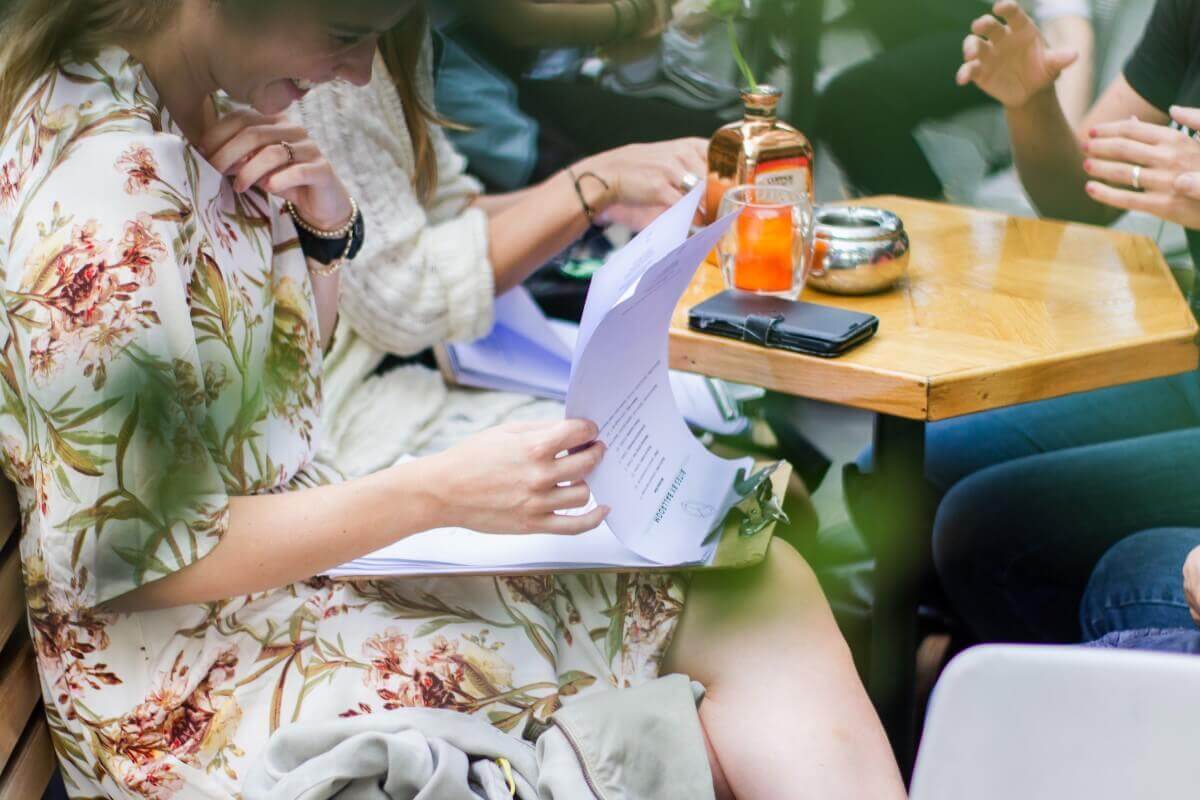
Tailoring Your Non-Alcoholic Selection
Crafting a non-alcoholic cocktail menu isn't one-size-fits-all. It's about aligning with your bar's identity and clientele. Here's how to curate a selection that resonates:
Reflect Your Bar's Identity
Your non-alcoholic offerings should mirror your bar's essence. Here's a breakdown based on several different bar types to guide you:
- Dive Bars: Keep it simple, and consider something like a Boilermaker. It's fitting, and the concept of a (non-alcoholic) shot and a beer is, well, awesome. Just imagine sitting down for a beer—as someone who doesn't drink alcohol—and being able to cheers with a shot first. Athletic Run Wild IPA and Pathfinder make a great combo.
- Crowd Pleasers: If your bar thrives on uncomplicated, popular cocktails, replicate that in your non-alcoholic menu. Offer familiar favorites like a Margarita or Cosmo made with non-alcoholic spirits, and consider indicating options that can be made alcohol-free with a spirit swap, giving guests ultimate flexibility and reducing the need to create new cocktails (slight tweaks might be necessary).
- The Classics: Venues serving classic cocktails might lean towards options like an Old Fashioned. It's important to remember that spirit-forward cocktails are harder to pull off—not impossible, but a challenge. Explore unique twists like this Negroni-riff that offers familiar yet fresh flavors, or modern classics with more layered profiles like a Paper Plane, Kentucky Buck, or Old Cuban.
- Craft Cocktail Bars: If your bar is known for its craft cocktail program, dive deep into equally impressive non-alcoholic cocktails. Distinctive spirits like Ghia, Wilderton, and Three Spirit can lay the foundation for great drinks, and when combined with the same level of innovation that high-end bars are known for, the results are spectacular.
- Fine Dining: For those offering tasting menus, consider pairing courses with sophisticated wine alternatives from producers like Proxies, Non, Kally, and Copenhagen Sparkling Tea. Unlike dealcoholized wine—which can sometimes be disappointing—these winelike drinks are made with a combination of juice, tea, vinegar, herbs, bitters, and more.
A Note on Practicality
Space and resources can be hurdles when introducing or expanding a non-alcoholic program. With limited fridge space and time for prep, it might seem daunting to allocate resources for drinks that might not rival the sales of your regular offerings. The trick? Use ingredients already in your alcoholic cocktails and focus on a couple of versatile spirits that can be the backbone of multiple cocktails. If space is a real issue, stick to the basics: a top-notch non-alcoholic beer, a spirit, and a sparkling wine. Voila! You've got a zero-proof option for every guest and every occasion.
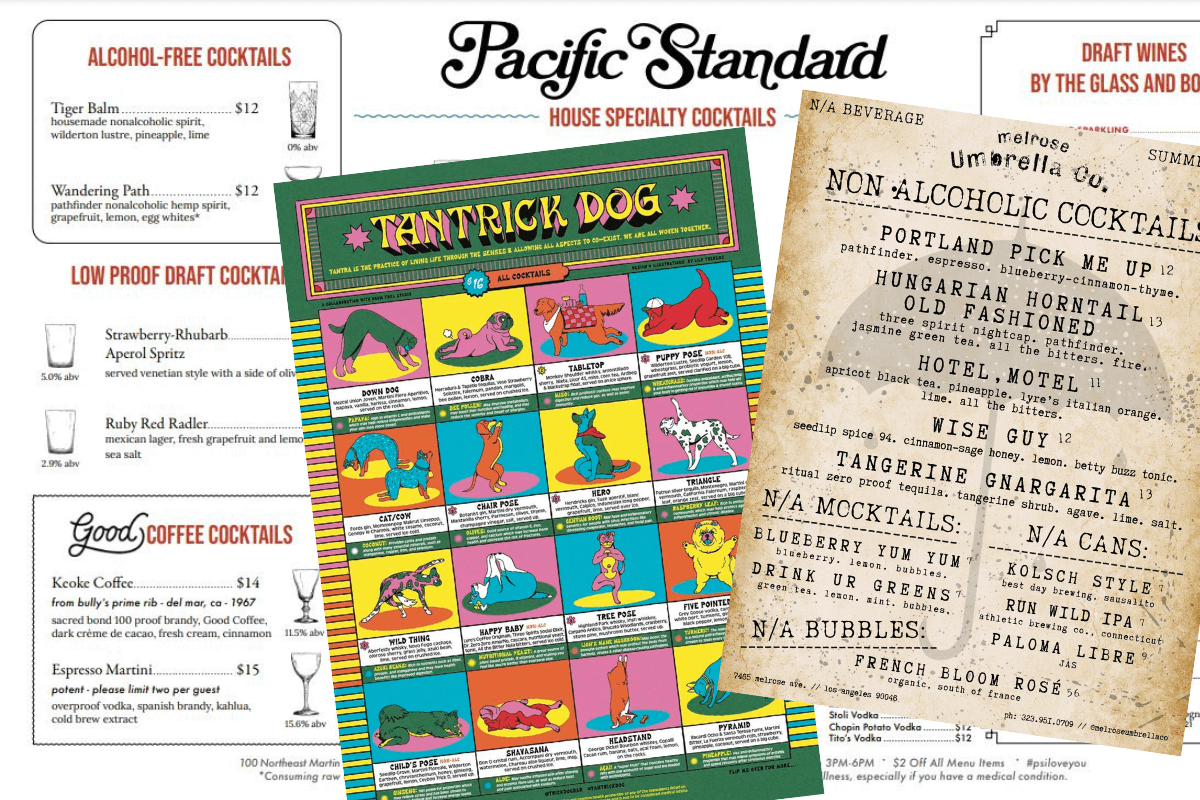
Formatting a Non-Alc Cocktail Menu
Crafting a non-alcoholic cocktail menu is as much about presentation as it is about the drinks themselves. The way you format and list these beverages can have a profound impact on their reception and sales. Here's a guide to menu formatting:
The Don'ts
- Invisibility: If it's not on the menu, it doesn't exist. Failing to list your non-alcoholic cocktails is a missed opportunity. Showcase your efforts and let patrons know about the great options available. Take it a step further by promoting it on social media and you're bound to see some guests who wouldn't have stopped in otherwise.
- The Kids' Table: Avoid listing non-alcoholic cocktails alongside juice, tea, or other soft drinks. It inadvertently creates an "othering" effect, making patrons feel sidelined. And please don't call your drinks "virgin mojito" or "virgin margarita". Not everyone wants to announce their non-alcoholic drink choice to the world, and I certainly don't want the same thing that a 7-year-old might order to feel grown up.
The Dos
- Integrated Listing: Consider listing non-alcoholic cocktails alongside their alcoholic counterparts. A simple "(non-alcoholic)" tag next to the drink name can suffice. This approach is akin to marking vegetarian or gluten-free dishes, ensuring clarity without segregation. Check out this menu from San Francisco's Trick Dog as a perfect example of a beautifully crafted menu that lets non-alcoholic drinks shine. This inclusive placement, and standard pricing across the board, suggests that these cocktails will be of high quality and that they're worth your money.
- Prime Positioning: If you're dedicating a section to non-alcoholic cocktails, place it prominently, preferably before or at least near the alcoholic options. This ensures visibility and subtly encourages patrons to consider these choices (most people who order non-alc drinks still consume alcohol). Jeffrey Morgenthaler adopts this approach at Pacific Standard in Portland, listing zero-proof cocktails first, followed by low-alcohol and then regular cocktails. He takes it one step further by listing the ABV for each drink—similar to a craft beer menu—offering transparency and allowing guests to steer their experience in whatever direction they choose.
- Diverse Offerings: Melrose Umbrella Co. in Los Angeles offers a wonderful, unique example. They have a "non-alcoholic cocktail" section featuring drinks made with non-alc spirit alternatives, priced similarly to regular cocktails due to the premium ingredients. Beneath this, they list "non-alcoholic mocktails" which are primarily juice, herb, and soda-based drinks priced lower due to their simpler composition. This tiered approach caters to diverse preferences and budgets, while subtly answering the question "why are non-alcoholic cocktails so expensive?", AND addressing the "mocktail" debate (see below) all at once. Well done!
- Beer and Wine: Where do non-alcoholic beer and wine go? The cocktail menu examples above are relevant here, too. Don't put them in the same section as soft drinks, juice, and tea. Do put them either in their own section or mixed in among the alcoholic beer and wines, with a clear "non-alcoholic" tag next to them.
The "Mocktail" Debate
The term "mocktail" evokes mixed feelings. Many industry professionals feel it diminishes the drink's value, hinting at a "mock" or "lesser" version. While I don't necessarily agree with that assessment, I do tend to associate the word with an overly sweet, juicy, syrup and soda based drink served in a pint glass with a bright red cherry. And if I'm being honest, I just find the word a bit too cute. I'm far less likely to order a drink from a "mocktail" menu than a "non-alcoholic cocktail menu", and will probably skip right over what you've thoughtfully created in favor of an NA beer.
I also understand that we need to meet people where they are, and many patrons find the term endearing and straightforward. Instagram is packed with wildly popular accounts like @mocktail.mom, @mocktailgirlie, and @themindfulmocktail, and a wonderful Facebook group called On The Mocks takes the pun even further. Chris Marshall, the founder of Sans Bar, has been slinging non-alcoholic cocktails across the country since 2017. According to him, mocktail is the term most commonly used to ask for these drinks—eliminating it would only make his job harder. Just look at Google's Search Trend tool to see that the term "mocktail" has nearly 60 times as many searches over the past year as "non-alcoholic cocktail". Mocktails aren't going anywhere.
So what's the takeaway here? While it's essential to be aware of the sentiments around terminology, it's equally crucial not to alienate or correct patrons based on their choice of words. Opting for universally accepted terms on your menu like "non-alcoholic cocktail," "alcohol-free cocktails," or "zero-proof cocktails" can strike a balance, ensuring clarity without contention. After all, it's about the experience, not semantics. Let's focus on crafting memorable moments over debates on nomenclature.
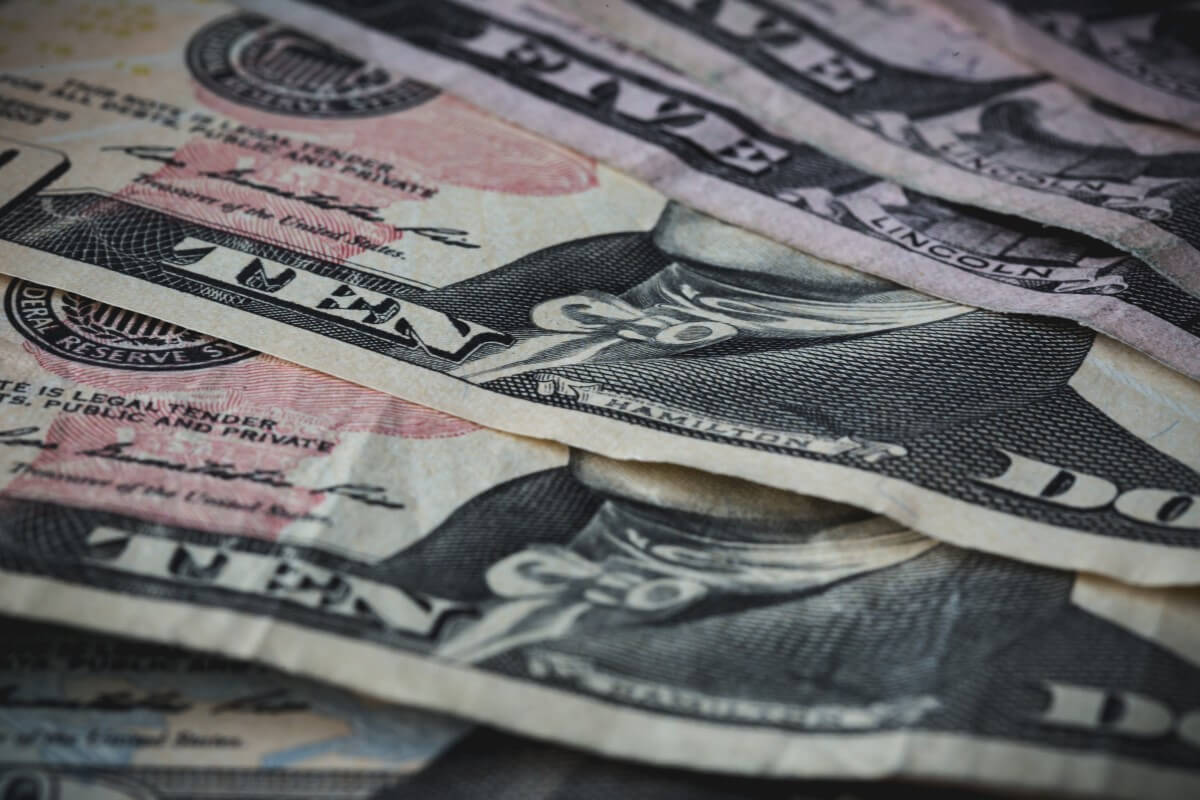
Pricing Non-Alcoholic Cocktails
Non-alcoholic spirits can be pricier than their alcoholic counterparts (read why here), yet patrons often expect these drinks to be more affordable due to their lower alcohol content. Here's how to price drinks appropriately and manage profit margins while offering sophisticated non-alcoholic options:
Charge Appropriately
Non-alcoholic cocktails should be priced in line with the rest of your menu, taking into account your cost of goods and margins. They offer a unique experience, and their cost should reflect their value and the effort that has gone into creating them. Don't underprice them! Remember that there is perceived value in price, and pricing these drinks too low implies that they're inferior. Your guests aren't paying for alcohol content, they're paying for quality and experience. In general, try to keep your non-alcoholic cocktails within a few dollars of your alcoholic offerings.
Cost-Effective Recipes
To offset the cost of expensive non-alcoholic spirits, diversify the cocktails on your menu. Some can be spirit-based, while others can lean on more affordable ingredients. For instance, drinks like our Lemon, Lime, and Bitters or this Hibiscus Sour offer a delightful experience without relying on pricier non-alcoholic spirits. Derek Brown's sour cocktail, Pinch Hitter, packs a wallop without any pricy ingredients whatsoever: lemon juice, apple cider vinegar, ginger syrup, aquafaba, and a bit of salt. For a flavorful highball inspired by Sour Patch Kids, check out Marina Markovic's Neruda cocktail.
For a terrific example of a menu that charges appropriately while managing its cost of goods effectively, check out Melrose Umbrella Co. Their menu seamlessly blends non-alcoholic "cocktails" (containing NA spirits) with more affordable "mocktails," offering guests a range of price points and styles.

Staff Training for Success
The success of your non-alcoholic menu hinges not just on the drinks, but on how effectively they're served and sold. The key? A well-informed staff. Here's a guide to ensuring your team is equipped to champion these offerings and increase sales.
Knowledge is Power
- Awareness: Begin with the basics. Ensure every staff member is aware of the non-alcoholic offerings. An uninformed staff can't promote what they don't know.
- Deep Dive: Host a dedicated staff meeting to delve into the non-alcoholic spirits you're carrying, their flavor profiles, and how they're made. Let your team taste the spirits, but make sure they taste the finished cocktails, too. Highlight that these beverages typically contain 0.5% or less ABV (the legal definition of "non-alcoholic"). That amount is impossible to become intoxicated on—there's about the same alcohol in a ripe banana—but it's essential to respect individual preferences for those with health concerns, in recovery, pregnant, religious, etc.
- Purpose and Benefits: Make sure your team understands why these drinks are here, and what the potential upside is. Emphasize the hospitality aspect—the addition of non-alcoholic cocktails is a step towards catering to everyone—but don't neglect to highlight the fact that these drinks represent increased potential for tips. Every server wants to sell more drinks, and this is an opportunity to sell cocktails to folks who would have otherwise ordered water. Ka-ching!
- AF/NA Certification: Team members who want to take it one step further can actually take a class and get certified in non-alcoholic beer, wine, and spirits with the "Aficionado Certification Program".
Service Tips
- Casual Mention: When discussing specials or personal favorites, encourage servers to casually mention a non-alcoholic cocktail in addition to the other alcoholic drinks they're suggesting. It's a subtle nod to the restaurant's diverse and inclusive offerings without making it the focal point.
- Proactive Offering: Train staff to introduce non-alcoholic options at the right time. If a guest declines an alcoholic drink, make them aware of the non-alc offerings. In a group where only one individual opts out, recommend a non-alcoholic version of whatever the group is drinking. Someone mentions they're the designated driver? Fantastic! You've got a few great options for them.
- Identification: It's crucial to differentiate between alcoholic and non-alcoholic versions of similar drinks. Employ visual cues, like a unique garnish, a distinct glass, or a specific straw. This ensures accuracy in service and prevents potentially dangerous mix-ups.
By ensuring your staff is well-versed, aligned, and enthusiastic about these offerings, you're setting the stage for a seamless and enjoyable experience for your guests (and more money in everyone's pockets).
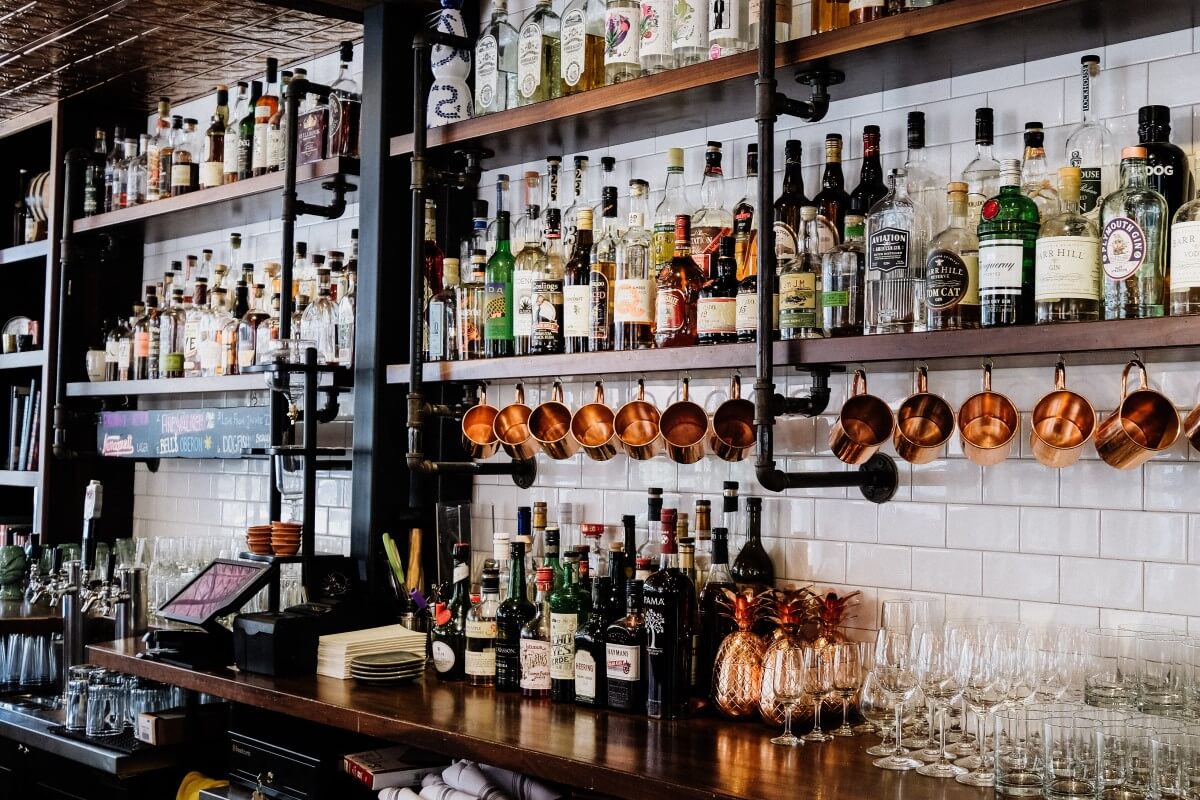
Sourcing Non-Alcoholic Spirits
Stocking a bar with non-alcoholic spirits may not be as straightforward as picking up the usual alcohol options from traditional distributors. However, with a little know-how, you can find top-notch non-alcoholic spirits with ease. Here's a guide to help you source:
- Distributors: Many established alcohol distributors are now including non-alcoholic spirits in their offerings. While their selections might be limited, it's a step in the right direction, and there are some great products available. Brands like Ritual Zero Proof, Free Spirits, Spiritless, Lyre's, Seedlip, Martini, and Giffard can be found with major distributors. And with options like Athletic Brewing available nationwide, there's no need to resort to O'Douls. Seriously, let's move past that.
- Shop Local: Non-alcoholic bars and bottle shops are popping up across the country. These venues, staffed by knowledgeable and passionate professionals, offer a fantastic opportunity to discover and sample a huge range of products. Some, like Boisson, even have wholesale programs. To find a shop near you, the map at Zero Proof Nation is a handy resource. While it might not be feasible for everyone just yet, most major cities now boast a non-alc shop, with more opening regularly.
- Direct Purchasing: There are lots of small non-alc brands out there, and they'll all happily answer any questions you have, offer samples, and ship wholesale orders directly. Message us on Instagram, for example, and you'll get the owners, makers, sales team, and shipping department all in one. Bigger brands tend to offer this as well, but there might be an extra step or two involved. The only challenge with this route, of course, is managing orders from multiple vendors.
The One-Stop Solution
While each of the above methods has its pros and cons, there's a solution that checks all of the boxes: Airgoods. This wholesale marketplace is tailor-made for non-alcoholic beverages. It links users to hundreds of non-alc brands, all under one account. After a simple signup process, which includes providing basic business details and your resale ID, you gain access to wholesale prices—as well as samples and support—from a majority of the producers on the market. Airgoods offers features like 60-day terms, discounts, and the ability to navigate by category to find exactly what you need.
Sourcing non-alcoholic spirits may require a slightly different approach, but platforms like Airgoods are making the process more efficient, and non-alc bottle shops offer a wonderful opportunity to taste and connect.
The Last Sip
The era of sophisticated, thoughtful non-alcoholic beverages is here, and it represents a shift in consumer preferences, a commitment to inclusivity, and an opportunity for bars and restaurants to elevate their guest experience. By embracing non-alcoholic cocktails, establishments not only cater to a broader audience but also foster an environment where every guest, regardless of their drink choice, feels valued—all while increasing your bottom line.
Cheers 🥂
-Ian


